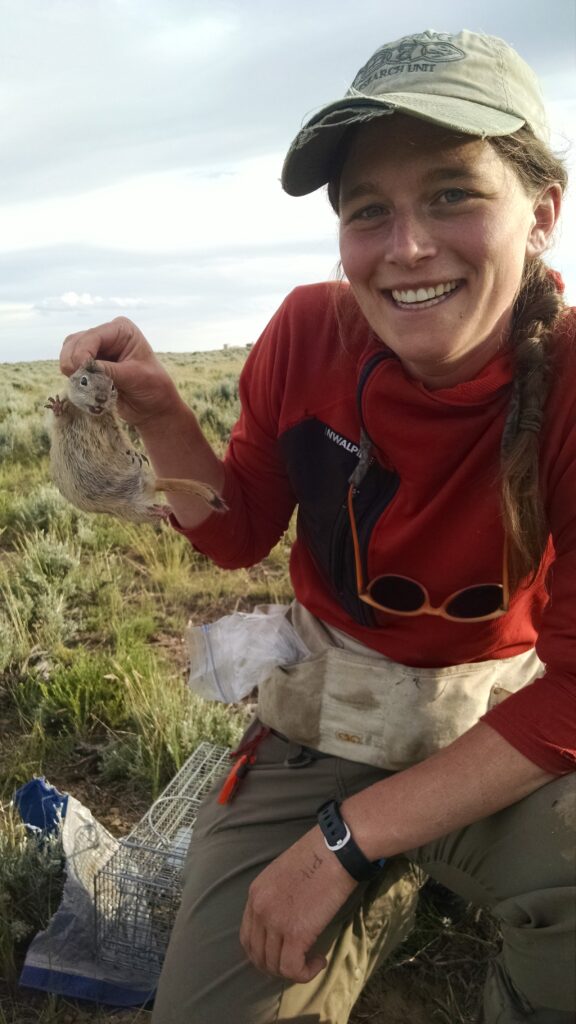 Lindsey worked as Research Scientist from 2018-2020 in the Chalfoun Lab at the University of Wyoming, based in the Cooperative Fish and Wildlife Research Unit. She is generally interested in community ecology, landscape change, and mechanistic research, specifically in improving our understanding of how wildlife species and communities respond to human-caused habitat change in its various forms.
Lindsey worked as Research Scientist from 2018-2020 in the Chalfoun Lab at the University of Wyoming, based in the Cooperative Fish and Wildlife Research Unit. She is generally interested in community ecology, landscape change, and mechanistic research, specifically in improving our understanding of how wildlife species and communities respond to human-caused habitat change in its various forms.
Originally from California, Lindsey received her B.S. from UC Berkeley in Environmental Science. After undegrad, Lindsey worked on a variety of wildlife projects across the western US, including researching endangered piping plovers and least terns on the Missouri River, American pika habitat use in Wyoming’s Wind River mountains, Sierra Nevada red fox population distributions, and woodpecker habitat selection in burned forests of northern California.
She received her master’s degree from the University of Wyoming in 2017, studying the potential mechanisms driving decreased nest survival for songbirds on natural gas fields. As a research scientist, she studied how songbird productivity is affected by weather variability, with implications for population-level responses to future climate scenarios. Learn more about her master’s research and current research.
Read more about Lindsey’s background and research at her professional website.
Publications
Sanders, L.E. and A.D. Chalfoun. In press. Mechanisms underlying increased nest predation in natural gas fields: a test of the mesopredator release hypothesis. Ecosphere.
Sanders, L.E. and A.D. Chalfoun. 2018. Novel landscape elements within natural gas fields increase densities of an important songbird nest predator. Biological Conservation, 228: 132-141.
Sanders, L.E., A.D. Chalfoun, T.M. Scherr. 2018. Inter-species nest use by a Loggerhead Shrike (Lanius ludovicianus). Wilson Journal of Ornithology,130(3): 774-777.
Carlisle, J., L. Sanders, A. Chalfoun and K. Gerow. 2018. Raptor nest-site use in relation to the proximity of coalbed-methane development. Animal Biodiversity and Conservation, 41(2):227-243.
